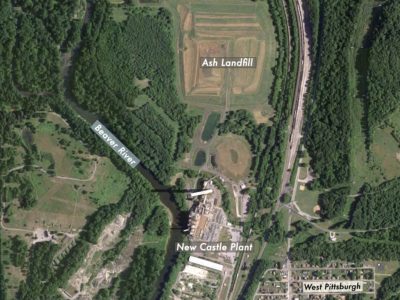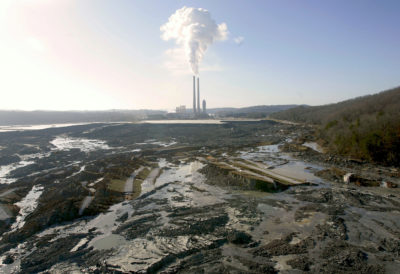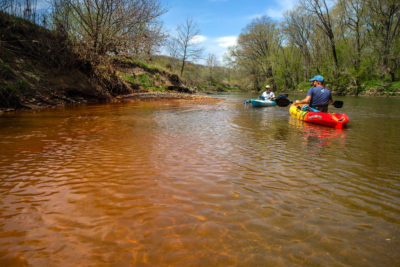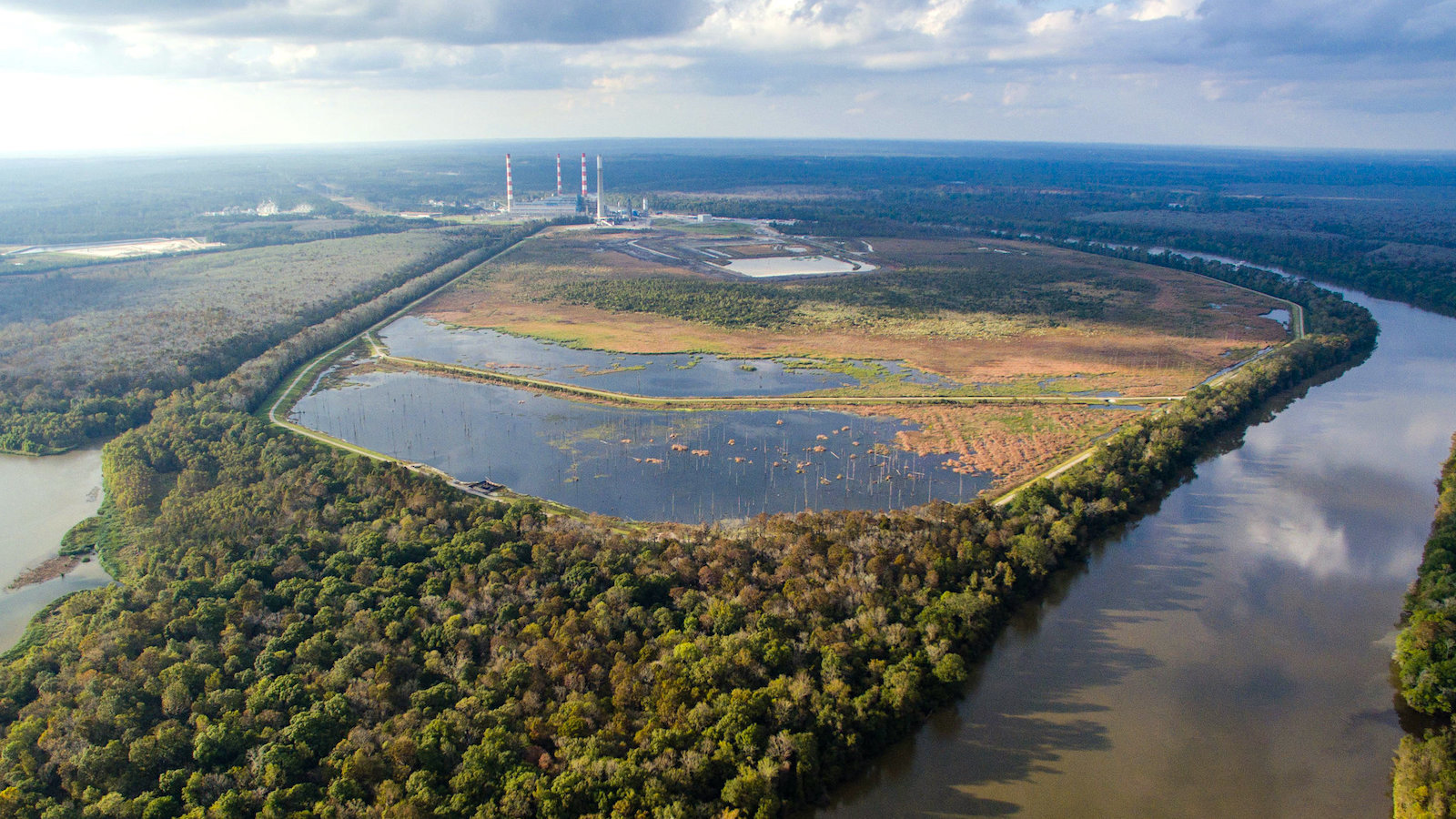Just a few months in the past, the New Fort Producing Station, an hour northwest of Pittsburgh, was named one of the crucial contaminated coal-fired energy plant websites within the nation. Polluted with arsenic and different poisonous chemical substances, the power sits between the village of West Pittsburgh, inhabitants 821, and the Beaver River, a tributary of the Ohio River, which serves as a consuming water supply for greater than 5 million individuals.
Though the plant, owned by GenOn, largely changed coal with pure fuel in 2016, the positioning nonetheless retains 3 million tons of ash, a mix of feather-light mud and rock-laden materials left over from burning coal. Over the past century, U.S. coal-powered electrical energy technology has produced not less than 5 billion tons of coal ash, sufficient waste to fill a line of rail vehicles reaching the moon.
Practically 60 % of U.S. annual coal ash manufacturing was recycled in 2021, principally for cement and concrete, in response to the American Coal Ash Affiliation. However huge quantities nonetheless fill not less than 746 coal ash impoundments in 43 states nationwide, with waste websites principally occurring in rural, low-income areas and sometimes in communities of coloration. A current report reveals that, regardless of federal guidelines enacted to remediate these websites, only a few of the nation’s nearly 300 coal vegetation have performed so. Nor have they got any plans to.
Groundwater sampling on the New Fort plant confirmed arsenic ranges 372 instances increased than EPA well being requirements.
Coal ash comprises not less than 17 poisonous heavy metals and pollution together with lead, mercury, cadmium, chromium, and selenium, all of which may endanger human well being, and not less than six neurotoxins and 5 identified or suspected carcinogens. Analysis exhibits that extended publicity to coal ash through air or water can have an effect on each main organ system within the human physique, inflicting delivery defects, coronary heart and lung illness, and quite a lot of cancers. Coal ash air pollution has additionally prompted fish kills and deformities in aquatic life.
In accordance with Avner Vengosh, a professor of environmental high quality at Duke College, poisonous metals “are comparatively simply leached out [of coal ash], in contrast to regular soil.” Rain that falls on unlined coal-ash impoundments — both ponds for storing moist ash or landfills for storing dry ash — can transport these contaminants to underlying groundwater, he notes, the place it will probably have an effect on consuming water provides. In accordance with a 2022 Earthjustice report, not less than 24 coal ash websites nationwide are identified to have contaminated greater than 100 non-public wells.
Groundwater sampling carried out on the New Fort plant between 2015 and 2017 confirmed arsenic ranges 372 instances increased, on common, than EPA well being requirements and lithium ranges 54 instances increased than the proposed federal normal. Earthjustice and the Environmental Integrity Venture (EIP) have ranked New Fort the sixth-most contaminated coal ash website within the nation.

An aerial view of the New Fort Producing Station in western Pennsylvania.
Yale Setting 360
“Despite the fact that [GenOn] is leaking poisonous pollution into the Beaver River and native groundwater on a regular basis,” stated Abel Russ, an legal professional with EIP and a coauthor of the 2022 report, “New Fort may not be a precedence [for state and federal regulators] as a result of it’s distant and, frankly, not lots of people are complaining about it.”
“They maintain us at the hours of darkness,” stated Cindy Mozzocio, 66, who has, together with her husband, owned a restaurant in West Pittsburgh for 18 years. She remembers that when GenOn cleaned up one in all its three waste pits 5 years earlier, she assumed the positioning was now not contaminated. “In the event that they stated it’s okay, you imagine them,” Mozzocio stated. “You belief your officers.”
One of many nation’s largest waste streams, coal ash was not regulated by the federal authorities till catastrophe struck. Three days earlier than Christmas in 2008, a coal ash pond in Roane County, Tennessee burst open, releasing 1.1 billion gallons of slurry. The waste buried 300 acres, leading to hundreds of thousands of {dollars} in harm and allegations — at present below litigation — that failure to prioritize security throughout the six-year cleanup contributed to a spread of cancers and respiratory sicknesses amongst cleanup staff.
The Coal Ash Rule, enacted in 2015, has had little impression. Right now, 94 % of U.S. coal ash ponds are nonetheless unlined.
Kingston — the biggest industrial spill in U.S. historical past — lastly pressured the Environmental Safety Company, which had been waffling over the right way to regulate coal ash waste for 30 years, to behave. In 2010, the EPA proposed two regulatory pathways. Coal ash may very well be listed as a hazardous waste, forcing utilities to shut their present coal-ash impoundments and truck the ash to the handful of landfills permitted to deal with this waste. Or ash may very well be listed as a strong waste, which might require all unlined pits to be retrofitted with liners or closed inside 5 years.
The company settled on the latter route, which was inexpensive for utilities, however the Coal Ash Rule, enacted in 2015, appears to have had little impression. Right now, 94 % of regulated U.S. coal ash ponds are nonetheless unlined, and two thirds are both sitting in, or inside 5 ft of, groundwater, in response to trade knowledge compiled and analyzed by Earthjustice.
Coal ash websites at greater than 90 % of the 292 energy vegetation within the U.S. that fall below the rule and have reported groundwater knowledge are leaking contaminants into groundwater, usually at ranges threatening ecosystems and consuming water. Of those contaminated vegetation, almost half have both not dedicated to a cleanup plan or have denied culpability within the contamination. Solely 4 % of the utilities controlling these websites have chosen cleanup plans to deal with among the contaminated water.

The aftermath of the 2008 coal ash spill on the Kingston Fossil Plant in Roane County, Tennessee.
Wade Payne / AP Photograph
A part of the issue is interpretation of the 2015 rule. Between 1939 and 1978, the New Fort energy plant shunted its watered-down waste right into a 120-acre unlined pond. By 1984, plant homeowners claimed this “legacy” pond was de-watered and commenced layering its waste in a landfill atop that website. The plant additionally maintained a smaller coal ash pond, to which NRG, the plant’s former proprietor, and GenOn in 2016 utilized the brand new federal coal ash rule: They dried out the pond and dumped its remaining ash within the landfill, which was then coated with filth. However the firms did nothing to remediate the bigger legacy website beneath the landfill, which continued to leak extraordinarily excessive ranges of contaminants into groundwater.
NRG and GenOn argue that since this legacy pond was dewatered and closed previous to the 2015 rule, the rule doesn’t apply to it. EIP’s Abel Russ argues it does. Underneath the definition of “inactive floor impoundments,” he says, a website qualifies for regulation if it nonetheless comprises each coal ash and liquid. In accordance with a report ready by an outdoor advisor for each NRG and GenOn, proof exhibits the historic impoundment is sitting in groundwater, together with a moist coal ash layer not less than 9 ft thick submerged beneath the water desk. In 2021, the EPA laid out in a letter to Duke Power, which was contesting regulation of a dewatered impoundment in Indiana, that unlined items sitting in groundwater do, in truth, meet the EPA’s definition of an “inactive floor impoundment” and are topic to the rule.
GenOn didn’t reply to requests for remark. NRG spokesperson Pat Hammond didn’t reply particular questions on New Fort or different vegetation it previously owned or operated collectively with GenOn. She acknowledged that NRG has not been affiliated with these vegetation since December of 2018, including “most of the people who have been related to these vegetation are now not with the corporate.”
“No state company has filed an enforcement motion wherever, despite the fact that we’ve seen widespread failure to conform.”
If GenOn had stopped producing electrical energy earlier than the 2015 rule was enacted, the corporate may need prevented cleanup completely, as a consequence of loopholes that maintain nearly half of U.S. coal ash websites unregulated. These unregulated websites embody not less than 170 ponds, within the case of utilities that stopped producing electrical energy earlier than October 2015, and nearly 300 inactive landfills, exempt as a result of they stopped receiving ash after October 17, 2015. Challenges to those loopholes are at present working their method by means of federal courtroom. Underneath a looming settlement, Earthjustice is urging the EPA to deal with each loopholes — ponds and landfills — concurrently.
Like many federal environmental legal guidelines, duty for imposing the Coal Ash Rule, which falls below the Useful resource Conservation and Restoration Act (RCRA), falls primarily to state companies. But in each state the place coal is burned, in response to the report by Earthjustice and EIP, utilities are violating federal rules for correct cleanup and disposal.
Frank Holleman, a senior legal professional on the Southern Environmental Regulation Heart (SELC), contends the connection between state companies and utilities creates a sensible drawback: State companies don’t need to implement the legislation. “No state company has filed an enforcement motion wherever, in opposition to any utility, below the 2015 rule, despite the fact that we’ve seen widespread failure to conform,” he says.
A part of the issue is capability. In accordance with Russ, Pennsylvania’s Division of Environmental Safety — which has oversight of 21 particular person coal ash impoundments at 9 energetic and retired coal vegetation — is so understaffed and underfunded that enforcement of the extremely technical and sophisticated rule is tough.
However states might fail to behave, additionally, as a consequence of highly effective lobbying. “You’ve trade seize in states that rely closely on coal to make electrical energy,” says Michael Gerrard, professor of environmental legislation at Columbia Regulation Faculty, noting West Virginia, Ohio, and Texas as examples. “These industries have captured environmental and utility regulators.”
On the federal stage, Gerrard notes, the Trump administration took workplace lower than a yr after adoption of the coal ash rule and “enforcement of all types of environmental legal guidelines dropped off.”
Final yr, the EPA lastly introduced choices that confirmed it could begin, nonetheless slowly, imposing the legislation. In January of 2022, the company denied three coal plant requests to proceed disposing of coal ash waste, with six extra denials thus far this yr.
Till rule enforcement picks up, nonetheless, communities are left with the Sisyphean job of holding trade accountable by submitting lawsuits below the federal Clear Water Act or state environmental legal guidelines. In accordance with Lisa Hallowell, a senior legal professional for EIP, such actions are “a really time-consuming and resource-intensive course of that often solely works with a possible outcome at a single plant.”
The 299 U.S. coal-burning vegetation that stay proceed to generate almost 70 million tons of latest ash yearly.
Nonetheless, the 2015 rule provides a brand new choice for citizen enforcement, and two such lawsuits are at present underway. Final fall, the Cellular Baykeeper filed a citizen enforcement motion in opposition to Alabama Energy, alleging that the utility plans to illegally go away greater than 21 million tons of coal ash from the James M. Barry Producing Plant in its unlined impoundment, which lies throughout the Cellular River floodplain and inside 5 ft of groundwater that’s already contaminated with coal-ash pollution like arsenic, boron, and cobalt. The lawsuit alleges that floods and storms, growing within the Southeast with local weather change, might increase groundwater ranges and additional saturate the ash.
The opposite citizen enforcement motion comes from Neighbors Opposing Pit Growth, a bunch of roughly 100 residents within the Cincinnati, Ohio space. The group alleges that the brand new homeowners of a defunct Duke Power plant that operated for six many years, accumulating greater than 6 million cubic yards of waste, are persevering with to dump ash in unlined pits, violating the 2015 rule and endangering public utility wells for 130,000 individuals, along with groundwater within the Ohio River floodplain.
“We actually want the EPA to implement the legislation and make it clear they’re going to face by what the legislation’s plain language requires, and convey these utilities together with them,” stated Holleman. “It’s unrealistic to count on small nonprofit neighborhood teams across the nation, and communities across the website, a lot of whom are lower-income communities of coloration, will be capable to struggle enormous, multi-billion-dollar monopolies.”

Coal ash waste from the shuttered Vermilion Energy Station seeps into the Center Fork of the Vermilion River close to Collison, Illinois in 2018.
Zbigniew Bzdak / Chicago Tribune / Tribune Information Service through Getty Pictures
As an alternative of remediating coal ash websites on a case-by-case foundation with costly litigation, coal ash must be recategorized as a hazardous materials below RCRA, stated the EIP’s Hallowell. Defining coal ash as hazardous would keep away from the present loopholes and topic it to tighter landfill rules and a stricter set of employee security necessities.
John Ward, communications coordinator of the American Coal Ash Affiliation, a commerce group targeted on recycling coal ash, stated regulating this materials as hazardous could be “untenable” for the trade and would kill the coal ash recycling trade. “It’s quite a bit higher to place these items in concrete and constructing merchandise the place it’s locked up, than piling hundreds of thousands of tons in a landfill someplace,” he stated.
Right now, greater than 99 % of present U.S. coal vegetation are dearer to run than replacements that depend on wind, photo voltaic, and battery storage. Utilities are both shutting down coal vegetation or retrofitting them to burn pure fuel. GenOn, for instance, has transformed all 22 of its vegetation to pure fuel or oil.
However as the ability grid transitions, a whole bunch of hundreds of thousands of tons of coal ash have been left behind. In accordance with EPA knowledge, the 299 coal-burning vegetation that stay within the U.S. proceed to generate nearly 70 million tons of latest ash a yr. The contaminants from this waste proceed emigrate into consuming water sources and lakes and rivers used for recreation.
“All people has been targeted on the hazard of storing [coal ash] in impoundments,” says Vengosh, who found that air pollution was migrating broadly from 30 North Carolina coal ash impoundments into 5 lakes lower than a mile and a half away. “We confirmed that the prepare has already left the station. The coal ash is already within the atmosphere.”
